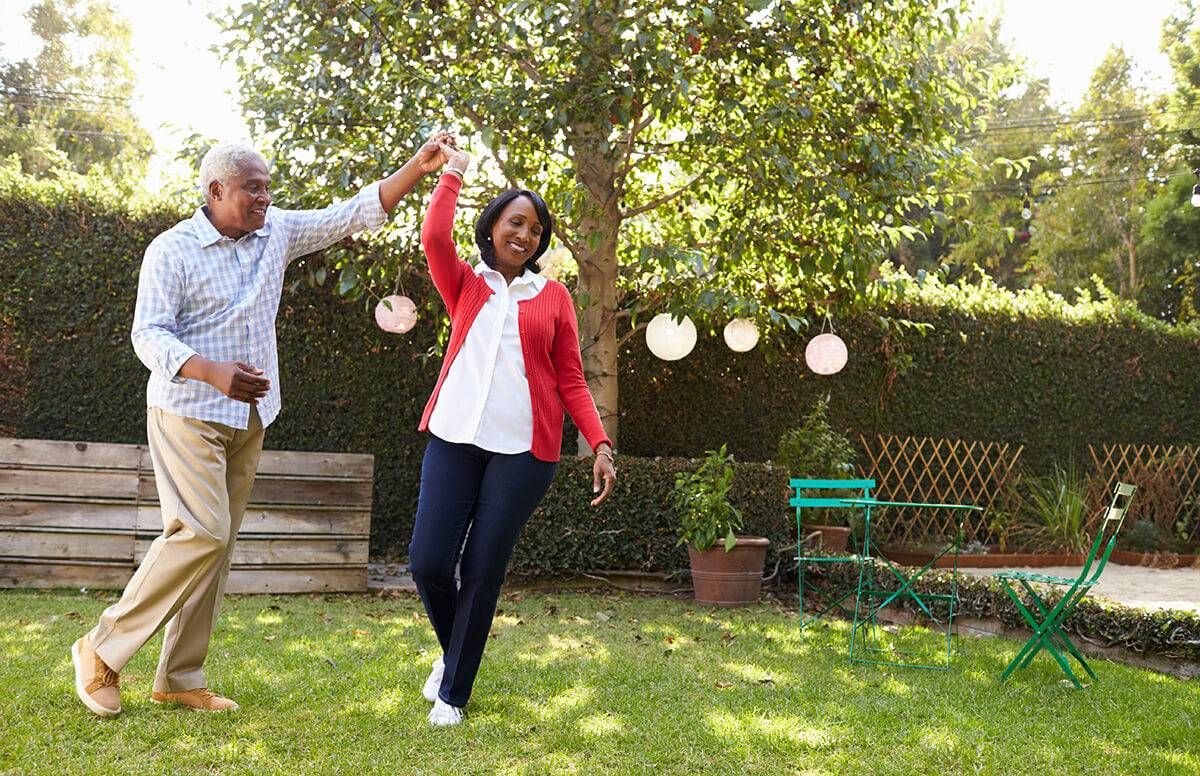Can You Dance Yourself to Better Brain Health?
Studies have been promising, but more research is needed
It turns out that dancing is not just a fun way to stay in shape — dance may also be a great way to improve your mental and physical condition as you get older. Many studies show that exercise is associated with preserving cognitive function in older adults. But why exercise helps and which types of exercise are best remain unknown.

An August study published in Frontiers in Human Neuroscience helps shed light on this, however. Researchers found that because of the added mental challenge of remembering dance steps and sensorimotor demands, dancing may be a better form of exercise than traditional fitness training when it comes to slowing the signs of aging.
Researchers from the German Center for Neurodegenerative Diseases in Magdeburg, Germany, found that dancing was associated with a one-two punch of increasing areas of the brain responsible for cognitive function and also for improving balance, more so than weight and endurance training.
In the study, healthy volunteers with an average age of 68 were assigned one of two study groups, one focused on learning dancing routines and the other on endurance and strength training.
After 18 months, both groups showed increases in the hippocampus region of the brain, an area that plays an important role in memory and learning and often declines as we age. While both groups showed a structural change in their brain, only the dancers exhibited a behavioral change — their balance improved.
Benefits of Dance Explored in Other Studies
While this study was small (only 26 participants completed it), other research has also found similarly positive benefits of dance on aging and health.
For example, a 2013 study, also published in Frontiers in Aging Neuroscience, reported that after six months, volunteers who participated in a weekly one-hour dance class had improved postural, sensorimotor and cognitive performance scores. Volunteers in the non-dance group showed either no changes or a decline in these scores.
A 2015 systematic review of 18 dance intervention studies on older adults suggested that dance, regardless of the type, can significantly improve muscle strength, endurance and balance.
In an older, but important. observational study published in 2003 on the relation between various leisure activities and the risk of dementia, researchers followed 469 adults older than 75 for about five years. They found that of 11 physical activities such as swimming and bicycling, and six mentally stimulating activities such as reading and playing board games, dancing was most associated with a reduced risk of developing dementia of all the activities, and the only physical activity associated with it at all.
Impact of Dance on Dementia
Recent research by Dr. Joe Verghese, professor of neurology and medicine at Albert Einstein College of Medicine and director of the Montefiore Einstein Center for the Aging Brain, also showed benefits of dance on memory and general cognition. Verghese says he’s often asked why dance might prevent dementia. “Dance is a complex activity that combines mental, physical, emotional and social aspects that together can be beneficial to your brain and overall health,” he says.
Social Aspect May Play a Role
Verghese points out that taking dance classes can also reduce feelings of isolation and social stress, which can contribute to the risk of cognitive decline. Furthermore, the music played during dance class can provide you with an emotional mood boost if the songs connect you with a happy time from your past. Or it can help motivate you to move more.
Barbara Resnick, professor at the University of Maryland School of Nursing and a geriatric nurse practitioner, thinks there is no question that dancing and exercise, in general, are great activities for older adults, especially in terms of balance. But she thinks the evidence is not strong enough about the benefits of dance for improving cognitive function.
“There are people who exercise rigorously who still have cognitive impairment,” explains Resnick. On the other hand, she does note that in her research and with her clients, learning new things, such as dance steps or how to play an instrument or board game, is good for the brain.
Both Verghese and Resnick say that larger scale studies are still needed to measure the benefits of dancing in a comprehensive fashion.

